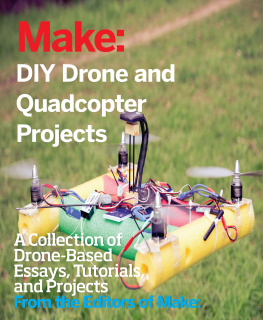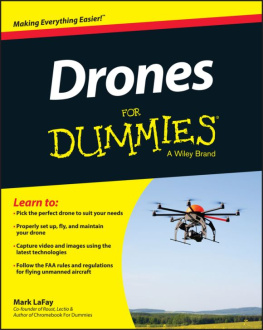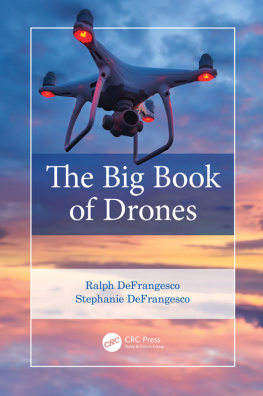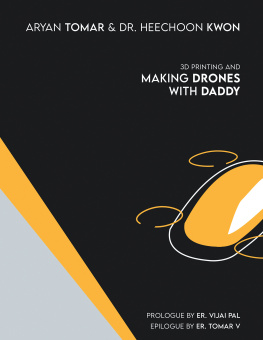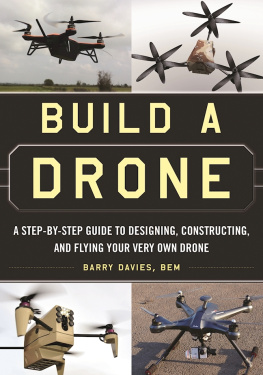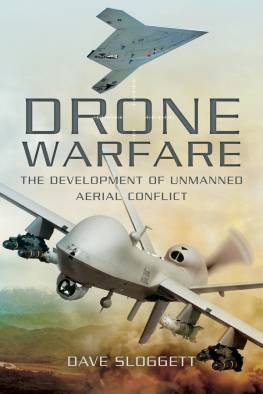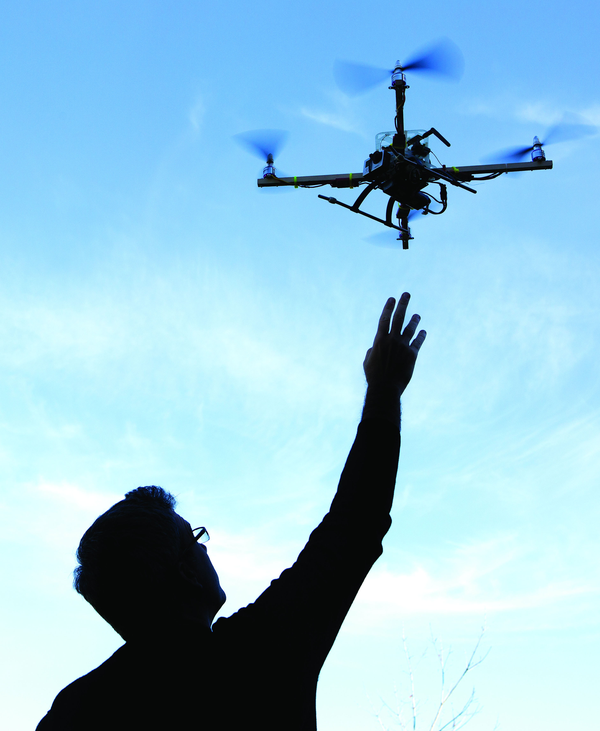Make: DIY Drone and Quadcopter Projects
by The Editors of Make:
Copyright 2016 Maker Media, Inc. All rights reserved.
Printed in the United States of America.
Published by Maker Media, Inc. , 1160 Battery Street East, Suite 125, San Francisco, CA 94111.
Maker Media books may be purchased for educational, business, or sales promotional use. Online editions are also available for most titles (http://safaribooksonline.com). For more information, contact OReilly Medias institutional sales department: 800-998-9938 or corporate@oreilly.com .
- Editor: Patrick Di Justo
- Production Editor: Colleen Cole
- Proofreader: Charles Roumeliotis
- Indexer: WordCo Indexing Services
- Interior Designer: David Futato
- Cover Designer: Ryland Grudzinski
- Illustrator: Rebecca Demarest
- April 2016: First Edition
Revision History for the First Edition
- 2016-04-05: First Release
See http://oreilly.com/catalog/errata.csp?isbn=9781680451290 for release details.
Make:, Maker Shed, and Maker Faire are registered trademarks of Maker Media, Inc. The Maker Media logo is a trademark of Maker Media, Inc. Make: DIY Drone and Quadcopter Projects and related trade dress are trademarks of Maker Media, Inc.
Many of the designations used by manufacturers and sellers to distinguish their products are claimed as trademarks. Where those designations appear in this book, and Maker Media, Inc. was aware of a trademark claim, the designations have been printed in caps or initial caps.
While every precaution has been taken in the preparation of this book, the publisher and authors assume no responsibility for errors or omissions, or for damages resulting from the use of the information contained herein.
978-1-680-45129-0
[LSI]
Chapter 1. Mind Your Drone
Not everybody likes the word droneindustry and military experts avoid using the D word in public. They prefer the term unmanned aerial system or vehicle and associated acronyms UAS or UAV. Despite plenty of misgivings about military and spy drones, the word drone has become widespread and popular, used with great enthusiasm by hobbyists who hang out on the DIY Drones site and by professional aerial photographers like the L.A.-based Drone Dudes. So what is a drone?
Dale Dougherty, founder of Make: Magazine and creator of Maker Faire
The original meaning of drone is a male bee. The body of a drone is biggerthan all other bees (except the queen), but what physically distinguishes adrone is a larger pair of compound eyes. Yet drones have no real work to do butreproduce. They make late afternoon flights to what is called a congregationarea, where drones gather looking to mate with a virgin queen. Once these beessucceed, however (and they perform this act in midair), the drones fall out ofthe sky, having left an essential body part behind. Thats all that drones do.
The notion that a drone doesnt have much work of its own leads to asecondary definition of a drone as someone who lives off the work of othersa parasite. In fact, at the end of summer, the worker bees kick the remainingdrones out of the hive. They eat too much and do too little. They can bereplaced in the spring.
This helps set up the problem. We not only need to figure out a definitionfor drones, we also have to figure out what theyre going to doand not do.While some agree that drones are unmanned, others point out that theyre piloted,preferring the acronym RPA for remotely piloted aircraft. That wouldntdifferentiate drones from remote-control aircraft, but it emphasizes that ahuman, who can be held responsible, is at the controls. A drone can be operatedmanually or it can be programmed to follow a fixed flight plan.
The distinguishing feature of a drone seems to be the promise of autonomy.Today, a typical flight consists of switching between manual flight andautopilot. How much further might it go? Given the right instrumentation and theability to process that data, could a drone be programmed to make context-awaredecisions, particularly ones that humans are not very good at? A drone mightdetect problems before they occur, such as responding to gusts of wind oravoiding unexpected obstacles. A drone might also be able to communicate withother drones.
Can a drone be considered a robot, able to obey Asimovs Three Laws ofRobotics? We need drones that explicitly avoid harming humans and can act toprotect themselves from destruction. We should expect this much from any fullyautonomous vehicle. A drone then might be said to have a mind of its own.
Until such time, however, that responsibility falls on the person flying thedrone. When you fly a drone, you arent just a useryoure a pilot. You mustprotect your equipment, yourself, and most importantly, other people. A bad orincompetent pilot can injure people or invade their privacy. Its not a lotdifferent from owning a pet or a car.
Good pilots, like the Drone Dudes, worry that bad or careless pilots willgarner the publics attention, create a climate of fear, and cause governmentsto restrict or eliminate drones for commercial or recreational use. The reasonwe need better technology is that few of us are very good pilots.
For makers, the most interesting challenge isnt just building drones orflying them. Its discovering what drones are good for, what creative uses theyhave, and what tough problems they might solve. Otherwise, planes andquadcopters will be sold only as toys, not tools, and many people will discardthem once they lose interest in their playthings. Were hoping drones becomeplatforms for developing compelling applications that will push the technologyforward and adjust the balance between the light and the dark side of drones.
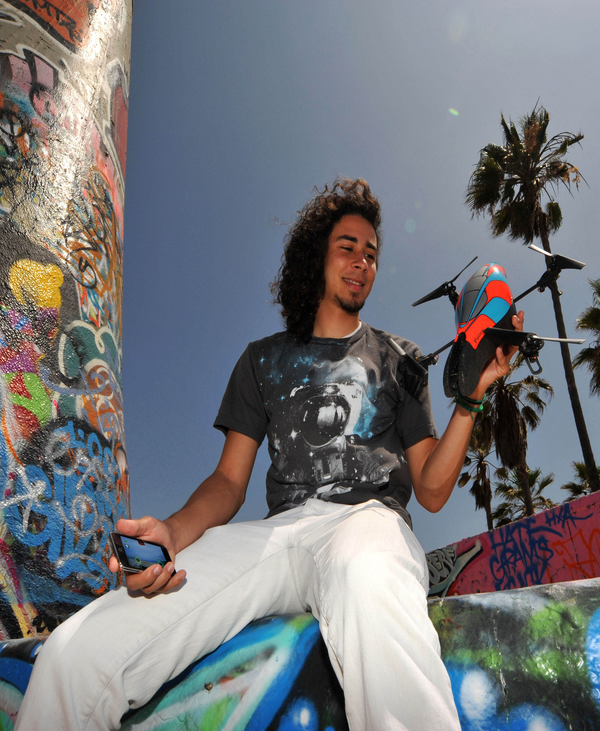
Figure I-1. An example of how cool you can be with a drone.
Chapter 2. Getting Started with Multicopters
Tips on how to build, buy, fly, and spy with multirotor R/C helicopters.
From Make:31 by Frits Lyneborg
A multicopter is a flying robot resembling a wagon wheelwithout thewheel. It has a central hub with electronics, power, and sensors, ontowhich are mounted arms that hold propellers to provide lift. The numberof arms gives the name: a tricopter (trirotor) has three arms, aquadrocopter or quadcopter (quadrotor) has four, a hexacopter six, and an octocopter eight. There are other variations, but these are the most popular setups.
Theyre also called multirotors, which arguably is the correct term,but Ill stick to multicopters because thats used more often on theInternet, where youll find the most information on the topic. Why trymulticopters? Perhaps you saw one and you just have to own this cool newgadget. Or you fly R/C planes and youd like to try a new type ofaircraft. Or youre into DIY electronics or robots, or you want to doaerial photography. Whatever your motivation, theres an option foryou. Ive flown a variety of multicopters and built three of my own, soIve picked up a few tips I can share.

